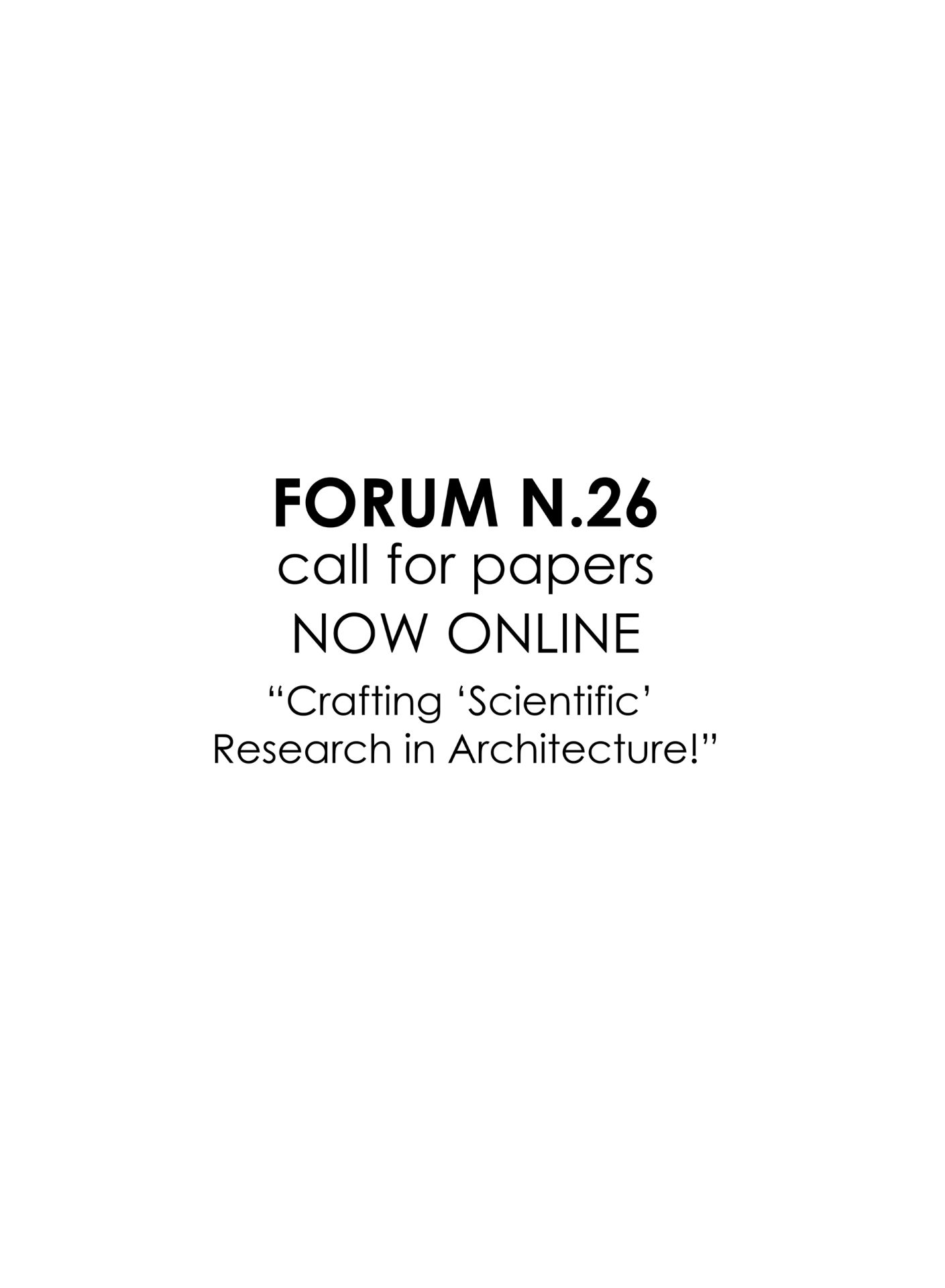Call for Papers for Forum A+P #26
Crafting ‘Scientific’ Research in Architecture
Editors:
Skender Luarasi, PhD and Llazar Kumaraku, PhD
‘Scientific research’ has gained a special, all-pervasive status in architecture, both in academia
and practice. From digital modeling to tenure dossiers, from building performance to invocations
of AI, from grant writing to politicians’ electoral statements, ‘scientific research’ holds a special
value, that of self-legitimation. While a particular ‘scientific’ research may be judged in terms of
its scientificity, the value of the ‘scientific’ as such is rarely questioned. The ‘privilege’ of the
‘scientific’ (in) research lies in its presumed objectivity, universality, and hence, in its claim to
truth. Paradoxically, it is in such claim that lies research’s commodification and politicization.
Could there be, one wonders, a ‘non-scientific’ research that would offer a different (claim to)
truth from the ‘scientific’ one? There might well be, but, albeit, at the expense of no funding…
The very drive toward scientific objectivity seems to trigger an explosion and dispersion of
different kinds of research, or “language games” – to borrow a term from Lyotard, which seem to
undermine the very possibility of a scientificity that would govern and unify all the different
research dialects. In How to Write a Thesis Umberto Eco made quite an operative and a rather
postmodernistically relaxed argument when he argued that for research to be scientific it must:
• deal “with a specific object, defined so that others can identify it.”
• say “things that have not yet been said about this object, or it revises things that have
already been said from a different perspective.”
• be “useful to others.”
• and provide “the elements required to verify ot disprove the hypotheses it presents, and
therefore it provides the foundation for future research” (Eco, 27-30, 2015)
Such ‘loose’ requirements encourage a multiplicity of research agendas and languages. Scientific
research has become popular, a sort of pop… There is not one ‘science’ but different craft(s) of
scientific research. The 26th issue of Forum A+P invites contributions that dwell precisely on
this divergence between science’s claim to truth on the one hand and the multitude of approaches
on the ‘scientific’ (in and of the) research on the other. This issue invites contributions that fold
scientific research upon itself to make it the very object of research and inquiry.
The coupling of the ‘scientific’ with ‘research’ may be new in architecture. In Le Corbusier, for
instance, we find multiple references to science on the one hand and research (recherche
patiente) on the other, but rarely we find the two terms coupled into one, as in ‘scientific
research’. The relationship of architecture with science, however, has a long history. In 1946, Le
Corbusier met with Albert Einstein in Princeton, NJ, seeking ‘scientific’ validation for his
Modulor. His pursuit represents Architecture’s eternal desire to be bound to Science, seen in both
its employing science for assembling material realities, as well as in the rhetoric of a scientific
design process. The history of architecture is not void of architecture-science relations:
Anaximander’s cartographies, Descartes tri-axial spatial matrix, Newton’s static and relative
spaces, the cosmic Baroque geometry of Galileo and Kepler, Giedion’s histories of architectural
technology, and Hannes Meyer’s call for the ‘scientization of architecture’ are some cases in
point. Even passionate Borromini had to redraw the plans of San Carlino according to a
geometrical scheme thirty years after the church was constructed to convey a sense of scientific
objectivity… Jean-Nicolas-Louis Durand’s modularization of architecture, Semper’s emphasis
on technics, Auguste Choisy’s axonometric drawings of historical monuments, Wittkower’s
drawings of Palladio’s villas, Colin Rowe’s repurposing of Perrault’s scientization of beauty
through the dispositif of the natural and the customary, Eisenman’s generative analysis, Aldo
Rossi’s rationalization and, thus, operationalization of the concept of type, Christopher
Alexander’s coding of perception and objects (a veritable precursor of today’s smart city), as
well as the digital turn in architecture – they all seek a specific relationship with science –
scientific thinking and legitimation, objectivity and universality. Nor is the history of architecture
void of monuments to scientists, for example, Boullée’s Cenotaph for Newton and Erich
Mendelsohn’s Einstein Tower. In ‘digital artists’ such as Nicolas Schoffer, Iannis Xenakis,
Harold Bloom, Patricia Piccinini among others, both addressing and employing scientific
perspectives from quantum physics, nanotechnologies, biotechnologies and so on, Modern Art
and Architecture and their histories evince multiple liaisons with the History of Science.
Such a wealth of intersections of science and architecture suggest that it is impossible to separate
and sometimes even distinguish between scientific research from its representation(s) as such.
The latter consists of different languages, contexts, bibliographies, artifacts, frameworks,
protocols, bureaucracies – broadly put, objects. This issue invites contributions that deal
precisely with these objects of scientific research in architecture, broadly defined as an inter-
disciplinary and inter-scalar approach to the built environment – from furniture, to building, to
territory. This issue, then, is about the objects through which the scientific research is crafted,
both in terms of its implementation and re-presentation as such, as scientific research. This
issue proposes four kinds of architectural objects: historical, technical, textual, and territorial.
These are not meant to be strict categories, but a structure that might help, however little, to
distinguish among a multitude of nuances and hybridity in our vast milieu of informatics.

